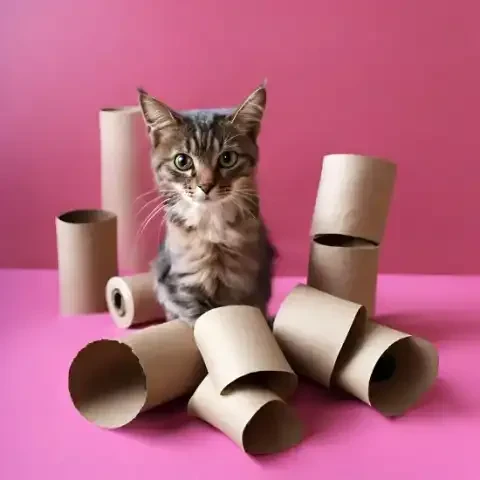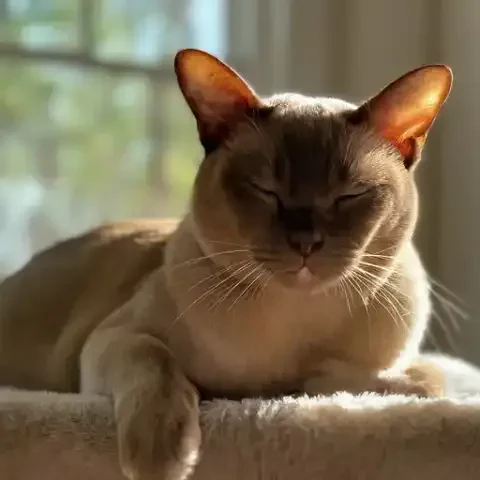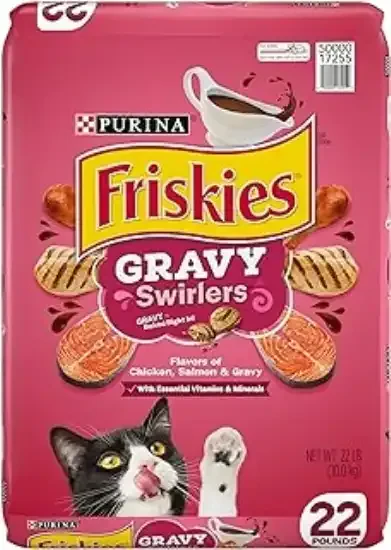Welcome to the home front, where the battle lines aren't drawn in muddy trenches or across scorched earth, but rather in the seemingly innocuous landscapes of our living rooms and kitchens. The combatants? On one side, the sleek, enigmatic, and utterly determined forces of feline-kind. On the other? Well, on the other side lies… everything else. Yes, you may fondly believe that you are the homeowner, the resident, the owner of your domain. You might pay the mortgage, select the furniture, and diligently dust the shelves. But your cat, with that knowing glint in their emerald eyes, understands the true, unspoken reality: your home is, in fact, contested territory, and they, with their inherent feline right, are engaged in a perpetual, albeit often silent, war. Their ultimate objective? To claim absolute, unquestioned dominance, not over you, perhaps not even over the dog (though that's a secondary goal), but over every single inanimate object within their kingdom, one strategically batted knick-knack, one expertly scratched sofa corner, one strategically claimed cardboard box at a time. This is not a war of overt aggression, not a violent clash of claws and teeth against toasters and television sets. No, this is a far more subtle, far more insidious, and infinitely more humorous struggle. It’s a battle waged through stealth, through cunning, through gravity-defying leaps and calculated acts of playful destruction. It’s a war for feline dominance, fought on the plush, upholstered battlefields of our very own homes. Prepare to be amused, to be enlightened, and to perhaps recognize the familiar skirmishes playing out daily in your own living space as we delve into the ongoing, often comical, struggle between cats and household objects – a battle for dominance that we, as devoted cat owners, are privileged (and slightly bewildered) to witness firsthand. From gravity-defying assaults on precarious perches to calculated attacks on unsuspecting appliances, we'll explore the many fronts in this perpetually ongoing feline war, revealing the subtle strategies, the hilarious tactics, and the ultimately endearing chaos that ensues when cats declare their unwavering intention to conquer, or at least thoroughly investigate and playfully dismantle, every single object within their purr-view.
Let's commence our strategic overview of this domestic conflict with Round 1: Gravity. For cats, gravity isn’t so much a law of physics as it is a personal challenge, a constant gauntlet thrown down daring them to defy its mundane constraints. Their war against gravity often manifests in a singular, unwavering obsession: the conquest of high places. It's not enough for a cat to simply exist at ground level. No, true feline dominion requires verticality, a strategic positioning atop the highest, most precarious perches their domain has to offer. Observe them, then, as they set their sights on the wobbly bookshelf, the seemingly unstable curtain rod, or the dizzying heights of the refrigerator’s crown. These are not simply vantage points; they are flags to be planted, summits to be conquered, symbols of feline aerial supremacy. And the more unstable, the more teetering and precarious the perch, the greater the allure. Stable, purpose-built cat trees? Often sniffed at with disdain, relegated to the status of ‘base camp’ rather than the coveted summit itself. No, the true prize, the ultimate symbol of victory over gravity, is that shelf that wobbles alarmingly with every paw placement, that curtain rod that sways dramatically under their weight, the refrigerator top that offers a dizzying drop to the kitchen floor. There's an inherent, almost perverse, humor in witnessing a cat's unwavering determination to conquer an obviously unstable object. They will leap with unwavering confidence, paws scrabbling for purchase, body swaying precariously, seemingly oblivious to the imminent threat of a gravity-induced tumble. And should that tumble occur, as it inevitably sometimes does, it’s met not with shame or retreat, but with a swift, graceful recovery, a nonchalant shake of the fur, and a renewed, even more determined, ascent. The lamp, that seemingly benign source of illumination, often becomes an unfortunate casualty in this feline war against physics. Tall, slender, and inherently top-heavy, lamps are practically designed to be tipped over by a determined feline combatant. Witness the cat circling the lamp base, investigating the dangling lampshade with a focused, almost predatory gaze. Perhaps it’s the gentle brush of a tail, the playful swat of a paw, or the full-body rub against the lamp’s slender form – whatever the initial provocation, the inevitable outcome is often the dramatic, slow-motion toppling of the lamp, crashing to the floor with a resounding thump. And the feline reaction? Often a look of wide-eyed, utterly feigned innocence. “Who, me? Did something… fall? How very… unfortunate.” It's the blatant denial of responsibility, the carefully crafted performance of obliviousness, that amplifies the comedic impact of the “lamp incident,” and countless similar mishaps involving vases, sculptures, and other tall, easily toppled household décor. Despite their best efforts, gravity, of course, does occasionally win. There are the ambitious leaps that fall just short, the comical slides down vertical surfaces, the undignified scrambles to regain footing after a misjudged aerial maneuver. But even in defeat, cats manage to snatch a kind of victory. They land with surprising agility, often right themselves with a graceful shake of their fur, and, most importantly, act as if the entire episode was a carefully orchestrated part of their plan all along. It was a tactical retreat, perhaps, or a calculated repositioning, never a true, undeniable defeat. And even on vertical surfaces, in the face of gravity's relentless pull, cats continue their campaign of feline dominance through scent marking. Observe them rubbing their faces, their bodies, their very essence, against furniture legs, door frames, and even, in truly dedicated cases, directly onto the walls themselves. This isn't just affection; it’s a subtle (or sometimes, not-so-subtle) declaration of ownership, a pheromone-laden assertion that even these inanimate, gravity-bound objects are, in fact, now firmly within the feline domain.
Moving onto Round 2, we enter the upholstered battlefield, the arena of Furniture. Here, the war for feline dominance takes on a more tactile, more… scratchy dimension. And at the heart of this conflict lies a particularly perplexing paradox: the scratching post. These purpose-built, often aesthetically questionable, structures are offered to cats as a truce offering, a designated zone for claw-sharpening and territorial marking, a supposed sanctuary from the relentless feline assault on our precious upholstery. And yet… the scratching post paradox persists. Expensive, sisal-wrapped scratching posts, carefully chosen to complement the living room décor, often stand forlornly in corners, gathering dust and feline indifference. Meanwhile, the plush, inviting expanse of the sofa, the richly textured allure of the Persian rug, the elegantly draped fabric of the curtains – these become the real targets, the preferred battlegrounds in the furniture war. It's not that scratching posts are entirely ignored. No, cats are strategic combatants, and they understand the value of deception. Scratching posts are sometimes utilized, yes, but often in a manner that seems almost… performative. A few desultory scratches, a cursory sharpening of the claws, just enough to appease the well-meaning humans, while the real offensive, the full-scale assault, is reserved for the forbidden, upholstered targets. It's a selective use, a calculated deployment, of the scratching post – sometimes a tool for scratching, sometimes just another object to be strategically… adjacent to, while the true scratching action unfolds elsewhere. And oh, the upholstery. Upholstery truly becomes Enemy #1 in the furniture war. Sofas, armchairs, ottomans – these are not mere seating arrangements; they are strategically vital enemy strongholds to be systematically undermined and conquered. Witness the cat launching a full-scale sofa assault, digging in claws with gusto, leaving visible trails of destruction in their wake. Hear the satisfying rip of fabric as claws engage, tearing threads and leaving tell-tale snags as evidence of their upholstery combat. Curtains, too, are drawn into the fray, becoming battlefields of dangling threads and shredded fabric. Cats climb curtains with the reckless abandon of seasoned mountaineers, swinging from them like furry acrobats, transforming elegant window dressings into makeshift jungle gyms, leaving behind a tattered testament to their curtain combat prowess. The visual evidence of this feline furniture warfare is often stark and undeniable. Snags in the sofa fabric, scratches etching their mark across wooden chair legs, dangling threads swaying from formerly pristine curtains – these are the battle scars, the visible reminders of the ongoing conflict for furniture dominance. And then there’s the strategic occupation of key furniture positions, the territorial maneuvers designed to claim the best seats in the house, particularly, and with particular delight, your seats. The moment you rise from your favorite armchair, even for a fleeting second, it is instantly, efficiently, and with unwavering determination, claimed by your feline overlord. They sprawl across entire couches, maximizing occupancy, spreading out luxuriously to occupy the largest possible surface area, leaving minimal space for any potential human encroachment. It's a subtle, yet undeniably clear, message: “This is my chair now. Find another perch, human.” Furniture, in the feline worldview, isn't merely for lounging or scratching; it becomes an elaborate obstacle course, a three-dimensional labyrinth to be navigated, conquered, and thoroughly dominated. They weave through furniture legs with practiced ease, jump gracefully over chair backs with athletic flair, and incorporate the entire furniture arrangement into their elaborate zoomie circuits, transforming the living room into a feline obstacle training facility. And inevitably, navigating this furniture obstacle course with such energetic abandon, items are… displaced. Knocked off tables, nudged from shelves, sent tumbling to the floor with a casual flick of a tail or an overly enthusiastic leap. Accidental? Perhaps. Strategic? Quite possibly. Collateral damage in the ongoing furniture war? Almost certainly.
Entering Round 3, we encounter the surprisingly contentious front of Technology. In the modern home, technology, with its bewildering array of wires, buttons, and warm surfaces, becomes a new and complex battleground in the feline war for dominance. And at the forefront of this electronic conflict is the humble keyboard. The keyboard conspiracy is real, a silent, ongoing feline campaign to disrupt human productivity and assert dominance over this essential tool of human communication. Watch as your cat, with an air of calculated nonchalance, strolls across your keyboard, seemingly oblivious to the delicate keys beneath their paws. But is it truly obliviousness? Or is it a deliberate act of sabotage? As they traverse the keys, gibberish streams across your screen, nonsensical emails are sent to bewildered colleagues, vital documents are inexplicably altered. It’s chaos, delightful feline-induced chaos, all orchestrated with a casual paw-walk across a QWERTY battlefield. And then there’s the strategic sit-in. Not content with mere keyboard disruption, cats will often stage a full-scale occupation, settling directly onto laptops, strategically positioned to block the screen, render the touchpad unusable, and generally halt all human attempts at productive work. It’s a blatant demand for attention, a furry blockade designed to divert human focus away from the cold, unyielding screen and back to the warm, demanding feline presence. The human struggle to work from home in the face of a keyboard-dominating feline presence is a daily battle, a constant negotiation between productivity and purrs, work deadlines and strategically placed furry bodies. Cords, too, represent a significant technological challenge, dangling temptations in the feline war against electronics. Phone chargers, lamp cords, speaker wires – these become irresistible targets for feline investigation, playful batting, and, alarmingly often, determined chewing. There's something inherently alluring about those dangling, swaying, often electrically charged cords that triggers a primal feline instinct. Perhaps it's the movement, the texture, or the sheer forbidden nature of these human-designed technological lifelines. Whatever the reason, the constant need to hide and protect cords from feline “attack” becomes an ongoing, low-level skirmish in the technology war. And then there’s the lure of warm electronics, the undeniable feline attraction to devices that radiate heat, transforming mundane gadgets into coveted napping spots. Routers, modems, game consoles, even the vents on the back of televisions – these become feline beacons, drawing cats in with their comforting warmth and strategically elevated positions. Observe the cat strategically positioned atop the router, radiating smug contentment as they bask in the gentle warmth, simultaneously disrupting internet connectivity and asserting their dominance over the very arteries of your digital life. The humorous image of a cat strategically and comfortably nestled on top of a piece of essential technology is a testament to their ability to repurpose even the most utilitarian objects for their own feline comfort and territorial claims. Finally, let's not forget the red dot rebellion, the often-fraught dynamic between cats and laser pointers, a micro-battle waged within the larger context of technology dominance. Initially, cats are undeniably engaged by the elusive red dot, the flickering beacon of laser light sparking their hunting instincts and eliciting playful chases. But often, this initial engagement morphs into something… else. A subtle shift from playful pursuit to something approaching frustration, or even, dare we say, feline annoyance. The “chase the elusive red dot” game, endlessly engaging for humans, can eventually lead to feline boredom, resentment, or a dawning realization of the futility of their pursuit. The laser pointer, in this context, becomes a frustrating, unbeatable “enemy” in the feline battle for dominance, a mocking, elusive symbol of human control that, ultimately, the cat cannot truly conquer, perhaps leading to a subtle, laser-pointer-related cold war within the home.
Round 4 brings us to the realm of Containers, and here, the cardboard kingdom coup unfolds, alongside the somewhat perplexing seizure of sinks and other unconventional receptacles. The box obsession, that universal feline phenomenon, takes on a new dimension when viewed through the lens of dominance. It's not merely about comfort or enclosure; it's about claiming ownership, asserting territorial rights over any and all cardboard boxes that dare to enter the feline domain. Any box, regardless of size, shape, or structural integrity, instantly becomes prime feline real estate the moment it crosses the threshold of your home. Expensive, purpose-built cat beds, thoughtfully designed for feline comfort and orthopedic support, are often pointedly ignored, relegated to the periphery while the humble cardboard box, often discarded packaging from human online shopping sprees, becomes the undisputed object of feline desire. The territoriality surrounding boxes is palpable. Other pets, and even humans, tread carefully when approaching a cat-occupied box. It is a clearly demarcated zone of feline sovereignty, a cardboard fortress from which they survey their domain and enforce their box-based rule. And this container conquest extends beyond cardboard. Cats exhibit a peculiar fascination, a territorial claim, over a bewildering array of unconventional containers. Sinks, bathroom sinks in particular, no matter how small, how awkwardly shaped, or how demonstrably unsuited for comfortable feline repose, become coveted napping locations. Bowls, vases, baskets, laundry hampers – anything vaguely container-shaped, anything that offers even the slightest semblance of enclosure, is fair game for feline seizure. Humorously portrayed, these unconventional containers become feline “thrones,” miniature command centers from which they survey their miniature domains, bizarrely shaped seats of power in their ongoing battle for household dominance. Containers, in the feline strategy manual, are not just for sleeping; they are also strategically vital ambush points. Boxes and bags, in particular, become feline hideouts, concealed positions from which they can launch surprise attacks on unsuspecting humans or other, less strategically minded, pets. A rustling paper bag becomes a potential source of amusement, a hidden lair from which they can suddenly erupt, pouncing on ankles or swatting at unsuspecting passersby. Boxes become vantage points, elevated command posts from which they can survey their domain, plan their next move in the ongoing battle, and generally observe the human world with an air of detached, box-based superiority. And even discarded containers, flattened boxes, torn paper bags, worn-out laundry baskets – these, too, retain their value in the feline worldview. Even when reduced to tattered remnants, these discarded containers are still considered valuable territory, still occupied, still cherished, still representing, perhaps, a symbol of victory. Perhaps the box itself, in its humble cardboard form, represents a conquered object, a tangible symbol of feline dominance over the household, a testament to their unwavering campaign to claim every corner, every container, every cubic inch of their perceived domain. Or maybe, just maybe, in addition to all the strategic and territorial implications, they are also, just a little bit, actually quite comfy.
Finally, we reach Round 5, the ethereal, psychological front of the battle: The Silent Stare-Off. This is where the feline war for dominance transcends the physical realm and ventures into the subtle, often unnerving, arena of intimidation tactics and psychic warfare. And at the heart of this silent battle lies the unblinking gaze, the intense, unwavering cat stare. The unblinking gaze, deployed with feline precision and unwavering focus, becomes a weapon in their arsenal, a means of asserting dominance over objects (and, let's be honest, sometimes humans) without a single paw lifted or a single hiss uttered. They stare at objects – a plant, a toy, a suspiciously inanimate cushion – with an intensity that borders on the unsettling. It is not a casual glance; it is a prolonged, unwavering gaze, a silent declaration of intent, a nonverbal assertion of feline will. The stare becomes a way to "claim" objects or space, a subtle form of territorial marking that transcends pheromones and physical boundaries. It's a psychological maneuver, a silent power play that can leave even the most stoic humans feeling slightly uneasy, vaguely unnerved, and subtly aware that they are, indeed, under feline scrutiny. And then there’s the mysterious stare at objects, but really… the stare over them, the stare that seems to transcend the physical object itself and venture into the realm of feline psychic projection. Staring intently at walls, gazing with laser focus into seemingly empty corners of rooms, staring at what appears to be utterly blank space – what are they seeing? What are they contemplating? Perhaps, in these moments of intense, object-directed staring, they are not merely observing inanimate objects; perhaps they are engaged in a silent, psychic stare-off with invisible object rivals, subtly intimidating the very fabric of the inanimate world itself. Perhaps they are staring down imaginary dust bunny armies, psychically subduing rogue air molecules, or simply, through sheer force of feline will, asserting their dominance over the very emptiness of space itself. And plants, those relatively defenseless, rooted inhabitants of our homes, often become unfortunate pawns, collateral damage, in this wider feline battle for dominance. Plants, lacking claws, teeth, or any discernible means of self-defense, become easy targets, objects to be chewed upon, leaves to be batted at, plant pots to be excavated and thoroughly investigated. Plants, in the feline domain, become symbols of vulnerability, objects ripe for intimidation, leafy casualties in the ongoing, often silent, war. And finally, there is perhaps the ultimate power move in the feline arsenal of dominance: indifference. Ignoring objects entirely, acting as if they are beneath feline notice, too insignificant to warrant even a passing glance – this can be the most potent display of feline supremacy of all. Nonchalantly walking past obstacles, stepping over discarded toys, gliding past strategically placed furniture arrangements without so much as a twitch of a whisker – this feigned indifference becomes a powerful statement. It is a declaration of supreme feline confidence, an assertion of effortless dominance, a silent message that these mundane household objects are, in the grand scheme of feline things, simply… beneath them.
In conclusion, the battle between cats and household objects is an ongoing, unresolved conflict, a perpetual, low-level war waged within the seemingly peaceful confines of our homes. It is a war without true victors, a conflict that ebbs and flows, shifts and changes, day in and day out. And yet, in this never-ending struggle, cats, in their own feline minds, often appear to emerge victorious, claiming dominance over high places, upholstered surfaces, technological devices, and even the seemingly inanimate objects that populate their domain. But despite the occasional chaos, the tipped-over lamps, the scratched furniture, the cardboard kingdom sprawling across the living room floor, we, the devoted and slightly bemused human observers, secretly, perhaps even wholeheartedly, love it. We embrace the chaos, we chuckle at the antics, and we find a strange, enduring charm in the quirky, dominant, and ultimately hilarious ways our feline companions interact with their household domain. Because, in the end, it's all part of living with a feline overlord – a furry, purring, occasionally destructive, but always utterly captivating dictator determined to conquer every corner of their kingdom, one household object at a time. And secretly, despite the minor furniture damage and the occasional late-night crash of a toppled lamp, we wouldn't, perhaps couldn't, have it any other way.







